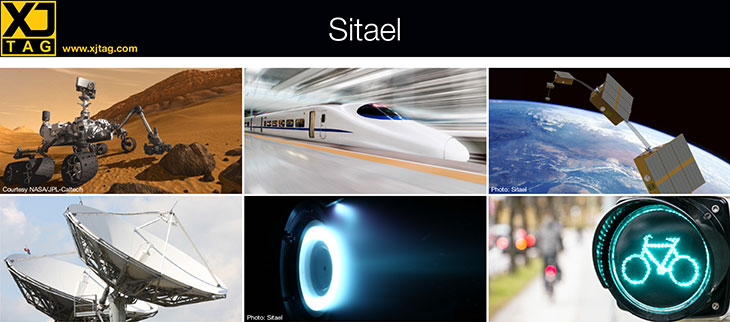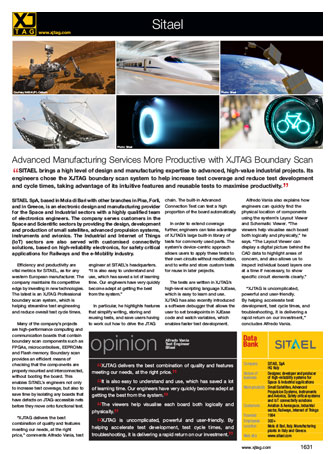SITAEL brings a high level of design and manufacturing expertise to advanced, high-value industrial projects. Its engineers chose the XJTAG boundary scan system to help increase test coverage and reduce test development and cycle times, taking advantage of its intuitive features and reusable tests to maximise productivity.
SITAEL SpA, based in Mola di Bari with other branches in Pisa, Forli, and in Greece, is an electronic design and manufacturing provider for the Space and Industrial sectors with a highly qualified team of electronics engineers. The company serves customers in the Space and Scientific sectors by providing the design, development and production of small satellites, advanced propulsion systems, instruments and avionics. The Industrial and Internet of Things (IoT) sectors are also served with customised connectivity solutions, based on high-reliability electronics, for safety critical applications for Railways and the e-Mobility industry.
Efficiency and productivity are vital metrics for SITAEL, as for any western European manufacturer. The company maintains its competitive edge by investing in new technologies. The latest is an XJTAG Professional boundary scan system, which is helping streamline test engineering and reduce overall test cycle times.
Many of the company’s projects are high-performance computing and communication boards that contain boundary scan components such as FPGAs, microcontrollers, EEPROMs and Flash memory. Boundary scan provides an efficient means of checking that the components are properly mounted and interconnected, without booting the board. This enables SITAEL’s engineers not only to increase test coverage, but also to save time by isolating any boards that have defects on JTAG-accessible nets before they move onto functional test.
“XJTAG delivers the best combination of quality and features meeting our needs, at the right price,” comments Alfredo Vania, test engineer at SITAEL’s headquarters. “It is also easy to understand and use, which has saved a lot of learning time. Our engineers have very quickly become adept at getting the best from the system.”
In particular, he highlights features that simplify writing, storing and reusing tests, and save users having to work out how to drive the JTAG chain. The built-in Advanced Connection Test can test a high proportion of the board automatically.
In order to extend coverage further, engineers can take advantage of XJTAG’s large built-in library of tests for commonly used parts. The system’s device-centric approach allows users to apply these tests to their own circuits without modification, and to write and store custom tests for reuse in later projects.
The tests are written in XJTAG’s high-level scripting language XJEase, which is easy to learn and use. XJTAG has also recently introduced a software debugger that allows the user to set breakpoints in XJEase code and watch variables, which enables faster test development.
Alfredo Vania also explains how engineers can quickly find the physical location of components using the system’s Layout Viewer and Schematic Viewer. “The viewers help visualise each board both logically and physically,” he says. “The Layout Viewer can display a digital picture behind the CAD data to highlight areas of concern, and also allows us to inspect individual board layers one at a time if necessary, to show specific circuit elements clearly.”
“XJTAG is uncomplicated, powerful and user-friendly. By helping accelerate test development, test cycle times, and troubleshooting, it is delivering a rapid return on our investment,” concludes Alfredo Vania.







